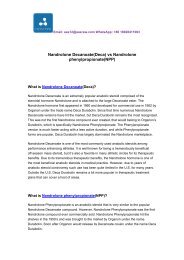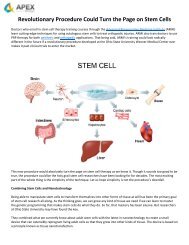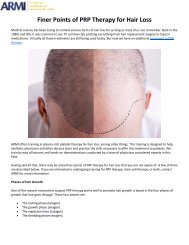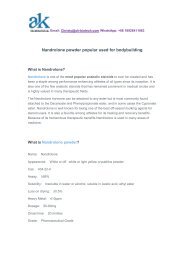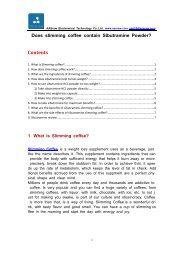The 3 Week Diet - Introduction Manual
Many of us are paralyzed by the con"icting information being given out in the health and nutrition #eld. !ere are hundreds (if not thousands) of diets and nutritional plans, quick fix pills and powders, gadgets and gizmos, infomercials and gurus who are all giving us confusing and very often, con"icting information on how to lose weight.
Many of us are paralyzed by the con"icting information being given out in the health and nutrition #eld. !ere are hundreds (if not thousands) of diets and nutritional plans, quick fix pills and powders, gadgets and gizmos, infomercials and gurus who are all giving us confusing and very often, con"icting information on how to lose weight.
You also want an ePaper? Increase the reach of your titles
YUMPU automatically turns print PDFs into web optimized ePapers that Google loves.
THE 3-WEEK DIET—INTRODUCTION MANUAL<br />
METABOLISM<br />
<strong>The</strong> primary function of our metabolism is simply to provide the right amount of fuel (at the right<br />
time) to keep our bodies alive and functioning properly. It accomplishes this through a complex<br />
series of chemical reactions whereby food is converted to the energy we need. When we eat, the<br />
food we swallow enters our digestive tract and is broken down by digestive enzymes. Carbohydrates<br />
are converted to glucose, fats to fatty acids and protein to amino acids. Once these nutrients<br />
are broken down, they are absorbed by the bloodstream and carried into the cells of the body. Our<br />
metabolism then works to either release these nutrients as energy, use them to build and repair lean<br />
tissue or store them for later use.<br />
<strong>The</strong>re are two basic metabolic processes—one is constructive and is responsible for building and<br />
storing energy for the body. <strong>The</strong> other is destructive, though in a positive sense, as it breaks down<br />
nutrient molecules to release energy. <strong>The</strong> constructive metabolic process is called anabolism, while<br />
the destructive process is called catabolism.<br />
Anabolism: promotes the growth of new cells, the maintenance and repair of tissues,<br />
and the storage of energy—usually through body fat—for future use. Small nutrient<br />
molecules are converted into larger molecules of protein, carbohydrates and fat.<br />
Catabolism: is responsible for immediately providing the body energy to use. Instead<br />
of building up, it breaks down the nutrient molecules to release energy.<br />
<strong>The</strong>se two processes do not occur simultaneously but are balanced by the body based on several<br />
factors.<br />
Catabolism, in particular—though some attribute this to overall metabolism—has three components:<br />
1. Basal metabolism: sometimes called resting metabolism, this is the metabolism component<br />
responsible for keeping you alive by ensuring normal body functions. Even if you were<br />
bedridden the whole day, basal metabolism is still at work. Basal metabolism is metabolism’s<br />
main component, as 60 to 70 percent of the calories from the food you eat are used for<br />
this. People who want to lose weight usually aim for a higher basal metabolic rate (BMR).<br />
22




